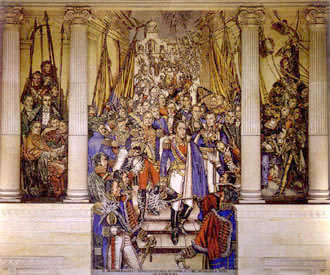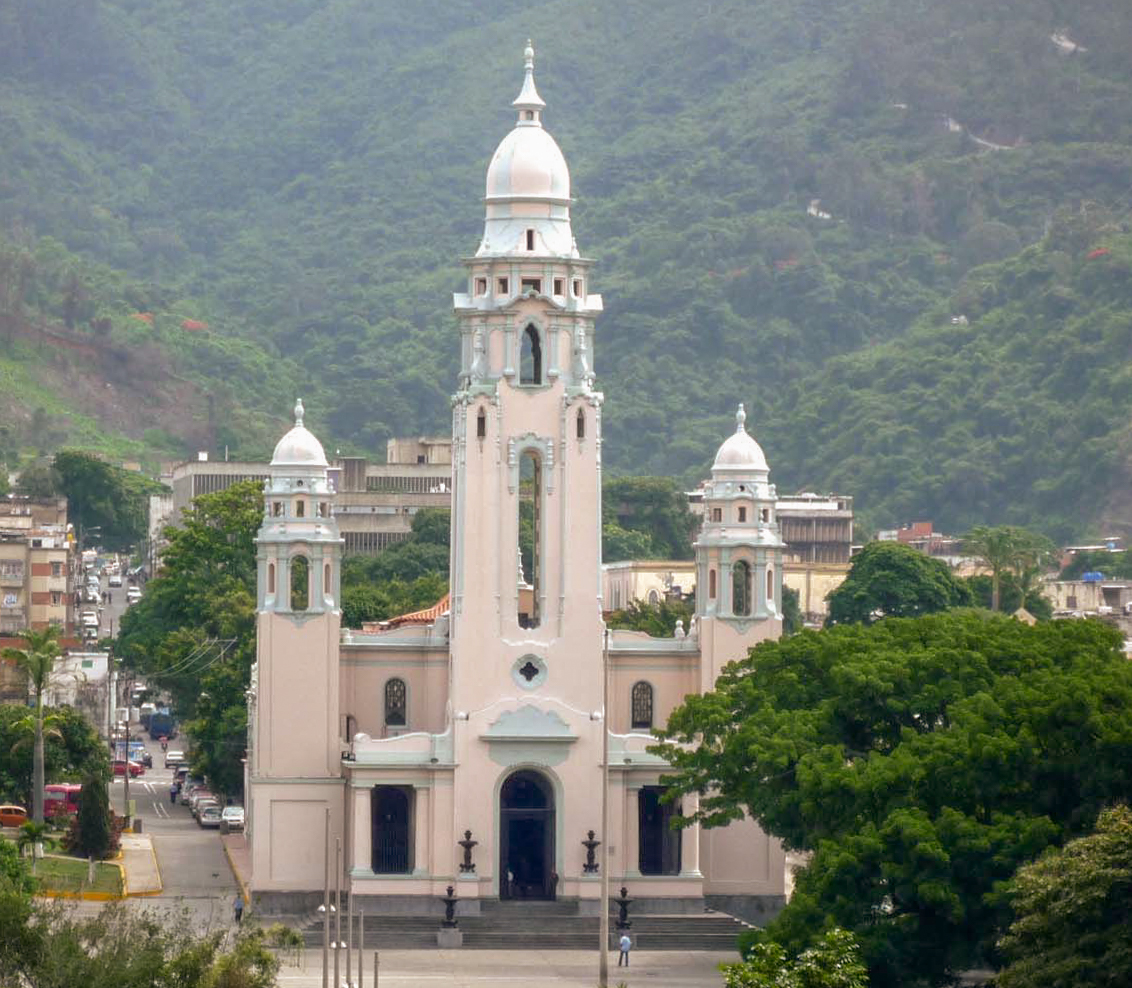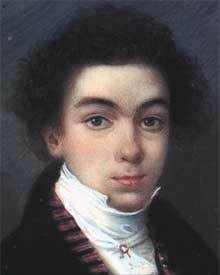|
Venezuelan Marine Corps
The Venezuelan Bolivarian Marine Corps are known as the Bolivarian Marine Infantry or formally as the ''Marine Division "General Simon Bolivar"'' (''División de Infantería de Marina General Simón Bolívar'') and is part of the Bolivarian Navy of Venezuela. Its motto is: ''Valor y Lealtad'' (Valor and Loyalty). History Nineteenth century The Venezuelan Marines trace their history back to the combined marines corps of Gran Colombia which was formed in 1822 and was dissolved in 1829 following Venezuela's secession from Gran Colombia. This was surprising as the Marine Corps of the Confederation largely consisted of Venezuelans. The Marines' most notable engagement in this era was the Battle of Lake Maracaibo (1823). During this time the Marines were mostly manned by personnel by the Grand Colombian Army, and used army-style ranks while wearing naval uniforms. Twentieth century In the beginning of the 20th century, during the term of President Cipriano Castro, the Navy had a marine ... [...More Info...] [...Related Items...] OR: [Wikipedia] [Google] [Baidu] |
Gran Colombia
Gran Colombia (, "Great Colombia"), or Greater Colombia, officially the Republic of Colombia ( Spanish: ''República de Colombia''), was a state that encompassed much of northern South America and part of southern Central America from 1819 to 1831. It included present-day Colombia, mainland Ecuador (i.e. excluding the Galápagos Islands), Panama, and Venezuela, along with parts of northern Peru, northwestern Brazil, and Part of Guyana. The terms Gran Colombia and Greater Colombia are used historiographically to distinguish it from the current Republic of Colombia, which is also the official name of the former state. However, international recognition of the legitimacy of the Gran Colombian state ran afoul of European opposition to the independence of states in the Americas. Austria, France, and Russia only recognized independence in the Americas if the new states accepted monarchs from European dynasties. In addition, Colombia and the international powers disagreed over the ... [...More Info...] [...Related Items...] OR: [Wikipedia] [Google] [Baidu] |
Guaicaipuro
Cacique Guaicaipuro was a legendary native (indigenous) Venezuelan chief of both the Teques and Caracas tribes. Though known today as Guaicaipuro, in documents of the time his name was written Guacaipuro.http://www.saber.ula.ve/bitstream/handle/123456789/16670/aborigenes.pdf?sequence=1&isAllowed=y Life Guaicaipuro formed a powerful coalition of different tribes which he led during part of the 16th century against the Spanish conquest of Venezuelan territory in the central region of the country, especially in the Caracas valley. He commanded, among others, Cacique (''Spanish: Indian chief'') Naiguatá, Guaicamacuto, Chacao, Aramaipuro, Paramaconi and his own son Baruta. Guaicaipuro is one of the most famous and celebrated Venezuelan caciques. The area occupied by the Teques was populated by several native groups each with its own cacique. Guaicaipuro's tribe, which was located in what is now San Antonio de los Altos, was the largest one. His son Baruta was himself a caciqu ... [...More Info...] [...Related Items...] OR: [Wikipedia] [Google] [Baidu] |
Pedro Camejo
Pedro Camejo, also known as Negro Primero ("The First Black"), was a Venezuelan soldier that fought with the Royal Army and later with the Independence Army during the Venezuelan War of Independence, reaching the rank of lieutenant. The nickname Negro Primero was inspired by his bravery and skill in handling spears, and because he was always in the first line of attack on the battlefield. It is also attributed to his having been the only black officer in the army of Simón Bolívar. Biography Pedro Camejo was born a slave, property of a Spanish royalist Vincente Alonzo on March 30, 1790, in San Juan de Payara San Juan de Payara is a city in Apure State in Venezuela. It is the shire town of the Pedro Camejo Municipality The Pedro Camejo Municipality is one of the seven municipalities (municipios) that makes up the Venezuelan state of Apure and, accordi .... He gained his freedom in 1816 after enlisting in the military to fight in the war for independence. Camejo was one o ... [...More Info...] [...Related Items...] OR: [Wikipedia] [Google] [Baidu] |
Naval Police
Military police (MP) are law enforcement agencies connected with, or part of, the military of a state. In wartime operations, the military police may support the main fighting force with force protection, convoy security, screening, rear reconnaissance, logistic traffic management, counterinsurgency, and detainee handling. In different countries it may refer to: * A section of military forces assigned to police, or garrison, occupied territories, usually during a war. * A section of military forces assigned to policing Prisoner of war Detentions. * A section of the military responsible for policing the areas of responsibility of the armed forces (referred to as provosts) against all criminal activity by military or civilian personnel * A section of the military responsible for policing in both the armed forces and in the civilian population (most gendarmeries, such as the French Gendarmerie or the Spanish Guardia Civil) * A section of the military solely responsible for pol ... [...More Info...] [...Related Items...] OR: [Wikipedia] [Google] [Baidu] |
Daniel Florence O'Leary
Daniel Florence O'Leary ( ga, Dónall Fínín Ó Laoghaire; 14 February 1801 – 24 February 1854) was a military general and aide-de-camp under Simón Bolívar. Life O'Leary was born in Cork, Ireland; his father was Jeremiah O'Leary, a butter merchant. In 1817, Daniel O'Leary emigrated to South America. Unlike many of the Irish who fought for Simon Bolívar in his many campaigns to win South American independence, O'Leary had not served in the Napoleonic Wars. In 1827 he married Soledad Soublette, the younger sister of General Carlos Soublette, with whom he had nine children. After Bolívar's death in 1830, O'Leary disobeyed orders to burn the general's personal documents. He spent much of the rest of his life organizing them, along with writing his own very extensive memoirs (spanning thirty-four volumes) of his time fighting in the revolutionary wars with Bolívar. He died in Bogotá, Colombia. He is buried in the National Pantheon of Venezuela. A bust and plaque ho ... [...More Info...] [...Related Items...] OR: [Wikipedia] [Google] [Baidu] |
Renato Beluche
Renato Beluche (15 December 1780 – 4 October 1860) was an American-born Venezuelan merchant, pirate and privateer active in the early nineteenth century Gulf Coast. Born in New Orleans, Spanish Louisiana to a French smuggler, Beluche went to sea as a pilot's mate in 1802 onboard a Spanish Navy warship. By 1805, he had left the navy and become the master of a schooner. Using this ship, Renato turned to piracy and raided Spanish and British merchantmen operating in the gulf. After becoming associated with Spanish American patriots in Latin America, Renato decided to join their cause, spending over a decade fighting against the Spanish Empire for the cause of Latin American independence. During this time, he joined the pirate Jean Lafitte in assisting the United States to repel a British invasion. Despite his service for the Gran Colombian government, Renato participated in a rebellion against them in 1836, for which he was exiled for nine years. After returning, he ... [...More Info...] [...Related Items...] OR: [Wikipedia] [Google] [Baidu] |
Lino De Clemente
Lino de Clemente (1767–1834) was a figure in the movement to obtain Venezuelan independence from Spain. Clemente was born in what is now Venezuela and received his early education in Spain before joining the Spanish Navy, where he served from 1786 to 1798. In the 1790s, he served in the Napoleonic Wars in Europe. In 1811, he was part of the group that declared the independence of Venezuela. Clemente married a sister of Simon Bolívar. In 1826, he served as minister of the navy for Gran Colombia. For a time in the 1810s, he lived with his family in exile in Philadelphia, Pennsylvania Philadelphia, often called Philly, is the List of municipalities in Pennsylvania#Municipalities, largest city in the Commonwealth (U.S. state), Commonwealth of Pennsylvania, the List of United States cities by population, sixth-largest city i .... There, he acted as an agent for the Venezuelan government in getting supplies to advance the interests of the revolution. After Venezuela had won in ... [...More Info...] [...Related Items...] OR: [Wikipedia] [Google] [Baidu] |
Simón Bolívar
Simón José Antonio de la Santísima Trinidad Bolívar y Palacios (24 July 1783 – 17 December 1830) was a Venezuelan military and political leader who led what are currently the countries of Colombia, Venezuela, Ecuador, Peru, Panama and Bolivia to independence from the Spanish Empire. He is known colloquially as '' El Libertador'', or the ''Liberator of America''. Simón Bolívar was born in Caracas in the Captaincy General of Venezuela into a wealthy criollo family. Before he turned ten, he lost both parents and lived in several households. Bolívar was educated abroad and lived in Spain, as was common for men of upper-class families in his day. While living in Madrid from 1800 to 1802, he was introduced to Enlightenment philosophy and met his future wife María Teresa Rodríguez del Toro y Alaysa. After returning to Venezuela, in 1803 del Toro contracted yellow fever and died. From 1803 to 1805, Bolívar embarked on a grand tour that ended in Rome, where he swore t ... [...More Info...] [...Related Items...] OR: [Wikipedia] [Google] [Baidu] |
Manuela Saenz
Manuela may refer to: People * Manuela (given name), a Spanish and Portuguese feminine given name * Manuela (singer) (1943–2001), German singer of Schlager songs Film and television * ''Manuela'' (1957 film), a British film directed by Guy Hamilton * ''Manuela'' (1967 film), a Cuban short film directed by Humberto Solás * ''Manuela'' (1976 film), a Spanish film directed by Gonzalo García Pelayo * ''Manuela'' (2006 film), a film directed by Marco Castro * ''Manuela'' (TV series), a 1991 telenovela starring Grecia Colmenares Grecia Dolores Colmenares Mieussens (born December 7, 1962 in Valencia, Venezuela) is a Venezuelan actress. Biography Grecia Dolores Colmenares Mieussens was born on December 7, 1962, in Valencia, Venezuela. She is the daughter of a Venezue ... Music * "Manuela" (Demis Roussos song), 1974 * "Manuela", a song by Julio Iglesias from '' A flor de piel'', 1974 {{disambiguation ja:マヌエラ pl:Manuela ... [...More Info...] [...Related Items...] OR: [Wikipedia] [Google] [Baidu] |
Juan Antonio Anzoategui
''Juan'' is a given name, the Spanish and Manx versions of ''John''. It is very common in Spain and in other Spanish-speaking communities around the world and in the Philippines, and also (pronounced differently) in the Isle of Man. In Spanish, the diminutive form (equivalent to ''Johnny'') is , with feminine form (comparable to ''Jane'', ''Joan'', or ''Joanna'') , and feminine diminutive (equivalent to ''Janet'', ''Janey'', ''Joanie'', etc.). Chinese terms * ( or 娟, 隽) 'beautiful, graceful' is a common given name for Chinese women. * () The Chinese character 卷, which in Mandarin is almost homophonic with the characters for the female name, is a division of a traditional Chinese manuscript or book and can be translated as 'fascicle', 'scroll', 'chapter', or 'volume'. Notable people * Juan (footballer, born 1979), Brazilian footballer * Juan (footballer, born 1982), Brazilian footballer * Juan (footballer, born March 2002), Brazilian footballer * Juan (footballer, ... [...More Info...] [...Related Items...] OR: [Wikipedia] [Google] [Baidu] |
Juan Bautista Arismendi
Juan Bautista Arismendi (March 15, 1775 – June 22, 1841) was a Venezuelan patriot and general of the Venezuelan War of Independence. He is buried in the National Pantheon of Venezuela. Arismendi was born in La Asuncion, Isla Margarita in 1775. He was a captain when the revolution broke out and took command of the patriots and drove the Spanish General Pablo Morillo Pablo Morillo y Morillo, Count of Cartagena and Marquess of La Puerta, a.k.a. ''El Pacificador'' (The Peace Maker) (5 May 1775 – 27 July 1837) was a Spanish general. Biography Morillo was born in Fuentesecas, Zamora, Spain. In 1791 ... from the island after a long conflict. He was one of the leaders that assembled a provincial congress at Angostura on 20 July 1817, and put at the head of the government a triumvirate of which Bolivar was a member. In 1819 he assisted Bolivar and Paez to drive Morillo from New Granada and from the greater part of Venezuela. In Bolivar's absence the Angostura congress ... [...More Info...] [...Related Items...] OR: [Wikipedia] [Google] [Baidu] |



.jpg)


